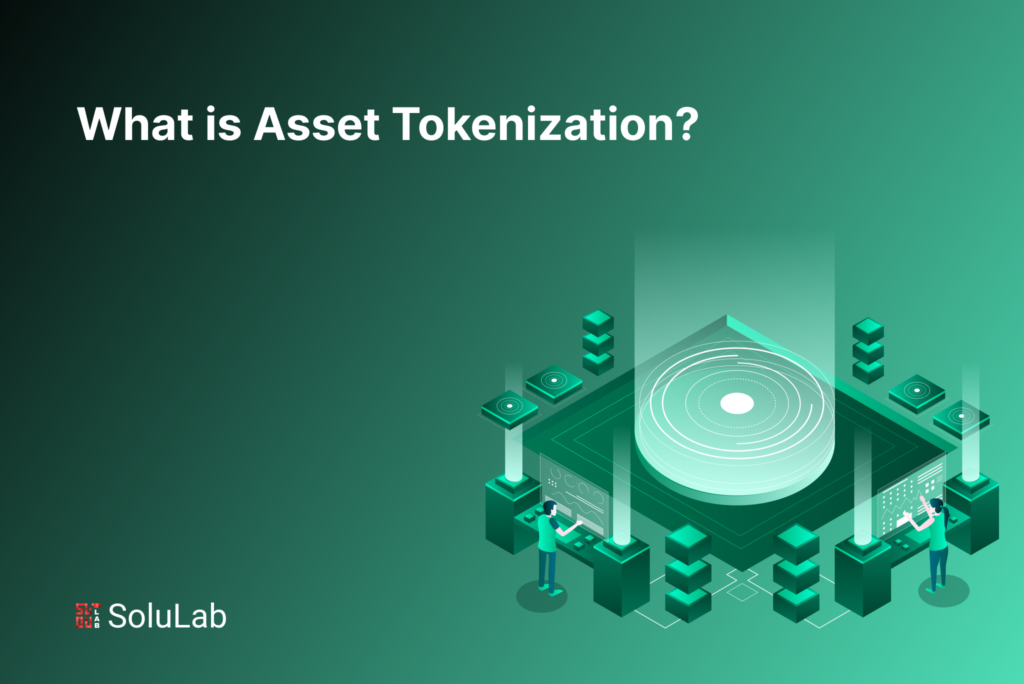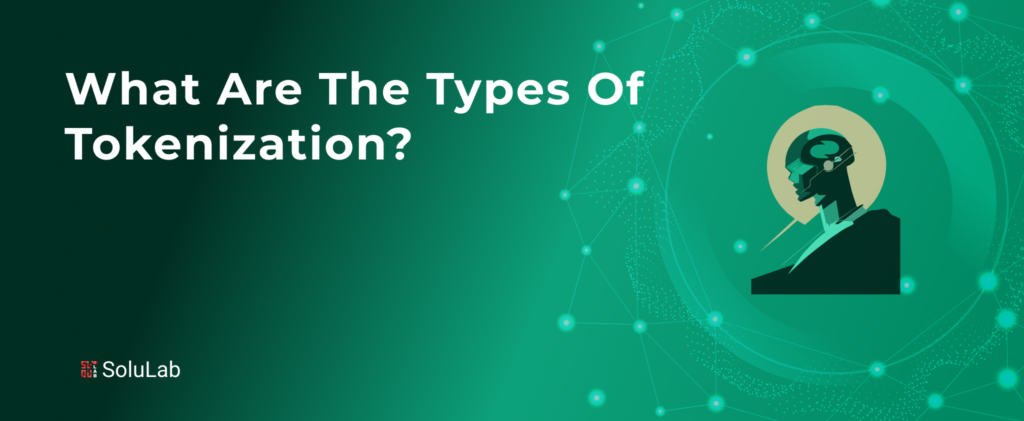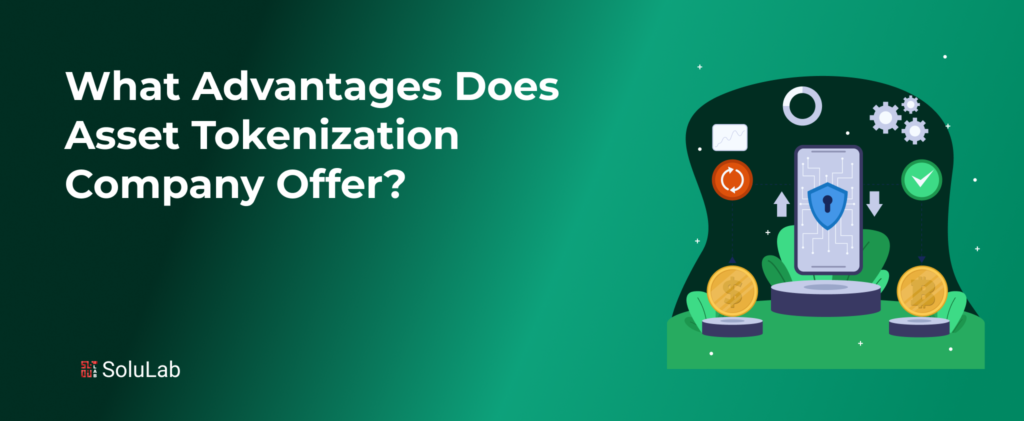
Modern technology developments are continuing to transform established sectors. Asset tokenization is one such idea that has drawn a lot of attention. By utilizing the potential of blockchain technology, asset tokenization creates digital tokens out of both tangible and intangible assets. With these tokens representing ownership rights and value, investors may participate in fractional ownership, conduct smooth asset trades, and access new investment opportunities.
Transforming physical assets into digital tokens on a blockchain network is the essence of asset tokenization. Doing so eliminates the conventional obstacles related to asset ownership and investment, creating opportunities for people and companies.
One of its key benefits is the potential for an asset tokenization development platform to democratize investing. By making several smaller investments in different assets, fractional ownership enables people to diversify their portfolios. Tokenization also eliminates geographical limitations, allowing anybody to participate in investment possibilities. Markets previously closed off because of logistical or governmental restrictions can now be accessed.
What are the Key Characteristics of Tokenized Assets?
In banking and investing, a tokenization company —turning physical assets into digital tokens—has become a ground-breaking idea. Assets that have been tokenized have several distinctive qualities that set them apart from conventional assets and appeal to investors looking for increased liquidity, transparency, and accessibility. We will discuss the main traits of tokenized assets and how they are changing the investment environment.
-
Fractional Ownership
Tokenized assets enable fractional ownership, allowing investors to own a portion of an asset rather than the whole. Through tokenization companies, high-value assets previously out of reach for many individuals can now be divided into smaller units, opening doors to a wider pool of investors. Fractional ownership not only enhances accessibility but also enables portfolio diversification by investing in multiple assets with smaller investment amounts.
-
Divisibility
Tokenized assets can be divided into numerous smaller units, known as tokens. Unlike traditional assets, which have minimum investment requirements, tokenized assets provide flexibility in terms of investment size. Divisibility facilitates liquidity and enables investors to trade smaller units of assets, promoting market efficiency and reducing barriers to entry.
-
Enhanced Liquidity
Due to high transaction costs, protracted settlement times, and a small pool of purchasers, traditional assets like real estate or fine art sometimes have restricted liquidity. By establishing a secondary market for tokenized assets, tokenization company solves this problem by making it simpler for investors to acquire and sell tokens. By increasing liquidity, asset owners can realize greater value, while investors are given the chance to exit their positions more quickly.
Read Our Blog Post: Importance Of Tokenization Of Assets
-
Transparency
Tokenized assets must possess transparency as a core quality. The underlying blockchain technology records all ownership changes and transactions, producing a transparent and immutable ledger. Thanks to this openness, all parties are guaranteed access to current information, including past ownership records, transaction specifics, and smart contract conditions. Investors might examine the ownership history and legitimacy.
-
Programmability
Tokenized assets use smart contracts and programmable, autonomous agreements. Tokenized asset terms and conditions are automated and enforced via smart contracts. They allow token holders to receive dividends, royalties, or profits automatically and by predetermined regulations. By increasing efficiency and eliminating the need for middlemen, programmability lowers costs and streamlines the fulfillment of contractual commitments.
-
Global Accessibility
Because a particular location does not limit tokenized assets, everyone in the globe may engage in investing possibilities. Traditional assets frequently encounter logistical and regulatory challenges, limiting access to a select number of investors. On the other hand, tokenized assets are simple to sell on online marketplaces, enabling investors everywhere to compete on an even playing field.
-
Security and Ownership Rights
Tokenized assets offer secure digital representations of ownership rights in terms of security and ownership rights. Tokenization’s company underlying blockchain technology guarantees tamper-proof records and fraud prevention. Holders of tokens own special cryptographic keys that provide them ownership rights and permit safe transfers. As a result, middlemen no longer need to confirm ownership, which lowers costs and improves security.
What are the Types of Tokenization?

The process of tokenizing, which involves turning physical assets into digital tokens, has created new opportunities for ownership and investment. Different forms of tokenization are tailored to certain asset classes and goals, giving investors various ways to participate in the digital economy. Fractional ownership, securitization, and real-world assets are the three main kinds of tokenization that will be covered in this topic.
Check Out Our Press Release: SoluLab’s White Label Real Estate Tokenization Platform is all set to start tokenizing real estate assets instantly
1. Fractional Ownership
By dividing assets into smaller pieces through the tokenization company of fractional ownership, investors may own only a portion of an asset rather than the complete thing. High-value assets like real estate, fine art, or antiques are appropriate for this tokenization. Fractional ownership has the following benefits:
High entry cost barriers are removed by fractional ownership, allowing smaller investors to engage in profitable assets that were previously only accessible to well-off people or institutions.
Investors may diversify their portfolios and spread risk across several asset classes by purchasing a portion of many assets. This lessens exposure to a single asset and improves the stability of the entire portfolio.
2. Securitization
Illiquid assets, such as loans, mortgages, or receivables, are transformed into marketable securities known as asset-backed tokens through securitization. These tokens are often produced through a procedure known as tokenized securitization and reflect ownership in a pool of underlying assets. Securitization’s salient attributes include
Combining many assets into a single security makes dividing the risks across a larger group of investors possible. This diversification reduces the exposure to individual defaults or variations in asset performance. Securitization increases liquidity by turning illiquid assets into tradable tokens. On secondary markets, investors may purchase and sell these tokens, unlocking value from assets that would otherwise be difficult to monetize.
3. Real-World Assets
Tokenization company incorporates a variety of real-world assets in addition to conventional financial instruments. Real-world asset tokenization platforms transform physical assets into digital tokens, such as commodities, real estate, or intellectual property. Real-world asset tokenization highlights include:
In historically unliquid markets like real estate or commodities, tokenization company creates liquidity. Investors may trade fractions of these assets by breaking them into tokens, which increases market efficiency and lowers transaction costs.
Fractional ownership is made possible through real-world asset tokenization, allowing investors to own a section of a building or a commodity. Allowing more people to contribute through fractional ownership encourages financial inclusion and diversity.
How to Select Assets for Tokenization: A Strategic Approach
The practice of tokenizing, which involves turning physical assets into digital tokens, has become quite popular in the financial sector. To optimize the advantages of tokenization and ensure effective deployment, choosing the appropriate assets for tokenization necessitates a deliberate approach. In this, we will examine the essential elements to consider while choosing assets for tokenization.
-
Asset Type and Characteristics
Determining the kinds of assets appropriate for tokenization is the first stage in asset selection. Physical assets like real estate or commodities, financial instruments, intellectual property rights, and revenue sources can all be considered assets. Consider the asset’s special qualities, such as its price, market demand, and possibility for fractional ownership.
-
Market Demand and Liquidity
Evaluate the asset’s liquidity and the market demand. Highly liquid assets, like publicly traded stocks, can be tokenized to simplify trading and improve market efficiency. On the other hand, illiquid assets could need extra planning and tactics to guarantee liquidity in the secondary market.
-
Ownership Rights and Legal Considerations
Examine any restrictions imposed by legislation or regulation, such as those relating to intellectual property or securities that may affect the tokenization process. Engage legal professionals to do due diligence and guarantee adherence to pertinent rules and regulations in the country where the asset is located.
Read Our Blog: Tokenizing Real Estate Assets On Blockchain
-
Value Proposition and Benefits
Consider the advantages of a tokenization company for the asset. Increased liquidity, fractional ownership, transparency, and accessibility are just a few benefits of tokenization. Consider how these advantages combine with the features of the asset and the preferences of possible investors. Consider whether asset class tokenization may unlock value, increase market efficiency, or provide new investment possibilities.
-
Technical Realisability
Determine if tokenizing the item is possible. Consider the underlying technologies necessary for tokenization, such as the platform’s scalability, smart contract functionality, and blockchain infrastructure. Make that the asset can be effectively split into digital tokens and that the tokenized version appropriately represents the original value.
-
Market and Industry Developments
Keep up with the tokenization-related market and industry developments. Keep track of the uptake and results of comparable tokenization efforts within the target asset class. Recognize the changing regulatory environment and any new best practices or standards in the asset tokenization industry. This information will aid decision-making and ensure compliance with market trends.
What Advantages Does Asset Tokenization Company Offer?

Asset tokenization, the transformation of physical assets into digital tokens on a blockchain, has emerged as a game-changing technology with several benefits. Traditional assets like real estate, works of art, commodities, and financial instruments may be made more accessible, effective, and safe by utilizing the potential of tokenization. We shall examine the main benefits that the asset tokenization platform provides in this.
- Increased Liquidity
Liquidity is increased due to the asset tokenization platform. It establishes a secondary market where investors can conveniently purchase, sell, and exchange digital tokens representing a portion of ownership in various assets. Traditional assets frequently experience low liquidity, high transaction costs, and protracted settlement times.
By removing these obstacles, tokenization opens up the market to more investors, enables the trading of assets in smaller units, and releases value. The capacity to sell tokens on digital platforms in a constantly active global market boosts market efficiency and makes transactions quicker and more affordable.
-
Fractional Ownership
The availability of fractional ownership is one of the most important benefits of asset tokenization. Tokenization allows investors to acquire high-value assets by dividing them into smaller pieces.
A wider spectrum of people, including retail investors, may invest in often expensive assets because of fractional ownership. Because smaller sums of money may be spread across many assets, this creates chances for portfolio diversification, risk reduction, and democratization of investing.
-
Enhanced Accessibility
Asset tokenization platform makes formerly illiquid or exclusive assets available to a larger group of investors, which lowers entry barriers and increases investment opportunities. Because tokenization eliminates regional restrictions, investors worldwide may engage in international markets and have exposure to a wide range of asset types. This improved accessibility encourages financial inclusion, allows people to invest in things they support, and cultivates a more varied and inclusive investing environment.
Check Out Our Blog: What You Need to Know About Investing in Tokenized Real Estate
-
Enhanced Transparency
The foundation of the asset tokenization platform, blockchain technology, offers a transparent and unchangeable database of transactions. The blockchain maintains a complete audit history of all ownership changes, transactions, and contract conditions. This increases transparency.
This openness fosters investor trust by giving investors immediate access to details about the asset’s ownership history, transaction logs, and smart contract rules. Investors may confirm the legitimacy of tokenized assets and acquire faith in the ecosystem’s integrity, lowering the risk of fraud and boosting market confidence.
-
Enhanced Security
By utilizing distributed ledger technology and cryptographic technologies, tokenization improves the security of assets. Tamper-proof records are ensured by blockchain, which also guards against unauthorized changes or fraudulent activity.
Unique cryptographic keys are given to token holders, giving them ownership rights and allowing safe transfers. As a result, intermediaries are no longer required to confirm ownership, lowering counterparty risk and possible failure points. Blockchain’s decentralized structure improves data security by making it more challenging for malevolent parties to infiltrate the system.
-
Fractional Investment Opportunities
Asset tokenization platform makes it possible to make fractional investments in assets other than standard ones. It makes it possible for regular people to invest in sources of income, intellectual property, or special investment vehicles that were previously only available to institutions or high-net-worth individuals.
Fractional investments in these unconventional asset groups offer the diversity and opportunity for lucrative returns. The investing landscape is widened through tokenization, opening up hitherto inaccessible markets to investors.
What is Early-Stage Investment Tokenization?
Early-stage investments are essential for promoting innovation and promoting economic expansion. However, these investments frequently encounter difficulties, including low liquidity, tough entrance requirements, and restricted access for small investors. Solving these issues, tokenization, and converting assets into digital tokens can transform early-stage investing. We will discuss tokenizing early-stage investments and how they may affect investors and entrepreneurs.
-
Increased Liquidity and Market Efficiency
Early-stage investments have historically been illiquid, which makes it difficult for investors to sell their holdings before an exit event like an initial public offering (IPO) or acquisition. Through the ability to exchange digital tokens that reflect ownership holdings, tokenization adds liquidity to these assets.
Tokenization company increases flexibility and liquidity by establishing secondary markets for these tokens, enabling investors to purchase and sell their assets. Enhancing market efficiency and boosting investor trust in the asset class improved liquidity.
-
Global Investment Opportunities
Tokenization allows investors from all around the world to invest in early-stage enterprises despite territorial limitations. With conventional funding, geographical restrictions, legal impediments, and small investor networks may make it difficult to fund businesses in other nations.
On the other side, tokenization uses blockchain technology to establish a worldwide investment market. Entrepreneurs now have access to a wider range of prospective financing sources because of the ease with which investors may access and invest in businesses from anywhere.
-
Additional Investor Protection
Early-stage investments become transparent and accountable thanks to tokenization. Blockchain technology maintains an immutable audit trail by recording all transactions and ownership changes. As a result of being able to check ownership records and follow the movement of tokens, investors become more trusting.
Automatic compliance with investment terms is made possible by smart contracts, self-executing arrangements built into the blockchain that guarantees the protection of investors’ rights and interests. Tokenization company lowers the possibility of fraud and increases investor trust in the investing process.
Conclusion
In conclusion, the asset tokenization platform is a game-changing invention with the potential to change how we perceive and use conventional assets. Asset tokenization creates ownership rights represented by digital tokens using blockchain technology, which has many advantages and prospects for investors, businesses, and the whole financial ecosystem.
Asset tokenization makes Increased liquidity possible, making buying, selling, and exchanging assets on digital marketplaces simple. This liquidity increases market efficiency, creates more investment possibilities, and attracts more investors.
Another major benefit of tokenization is fractional ownership, which makes formerly expensive and inaccessible assets more inexpensive and available to a wider variety of people. Investors can broaden their exposure to a range of asset types that were previously out of reach by diversifying their portfolios.
FAQs
1. What is an Asset tokenization platform?
Asset tokenization is turning physical assets into digital tokens stored on blockchain technology, including real estate, works of art, commodities, and financial instruments. These tokens, which can be purchased, sold, and exchanged on digital platforms, reflect ownership rights or value in the underlying assets.
2. How exactly does asset tokenization operate?
There are various steps in the asset tokenization platform. The asset is first assessed, and ownership rights are confirmed. The asset is then split into digital tokens, each representing a portion of the real asset. These tokens’ blockchain records are transparent and unchangeable records of ownership and financial transactions. Investors may then buy these tokens to own a portion of the asset.
3. Is asset tokenization regulated?
Different jurisdictions have different regulatory environments for asset tokenization. It is crucial to abide by all applicable financial, anti-money laundering, and securities legislation. Engaging legal professionals with expertise in tokenization and blockchain can assist in navigating the regulatory environment and ensuring compliance.
4. How does the tokenization of assets affect liquidity?
By establishing alternative markets for often illiquid assets, asset tokenization greatly improves liquidity. Digital platforms simplify buying, selling, and trading digital tokens, allowing investors to liquidate their positions quickly. A wider range of investors may now participate, and the market becomes more efficient due to the additional liquidity.






